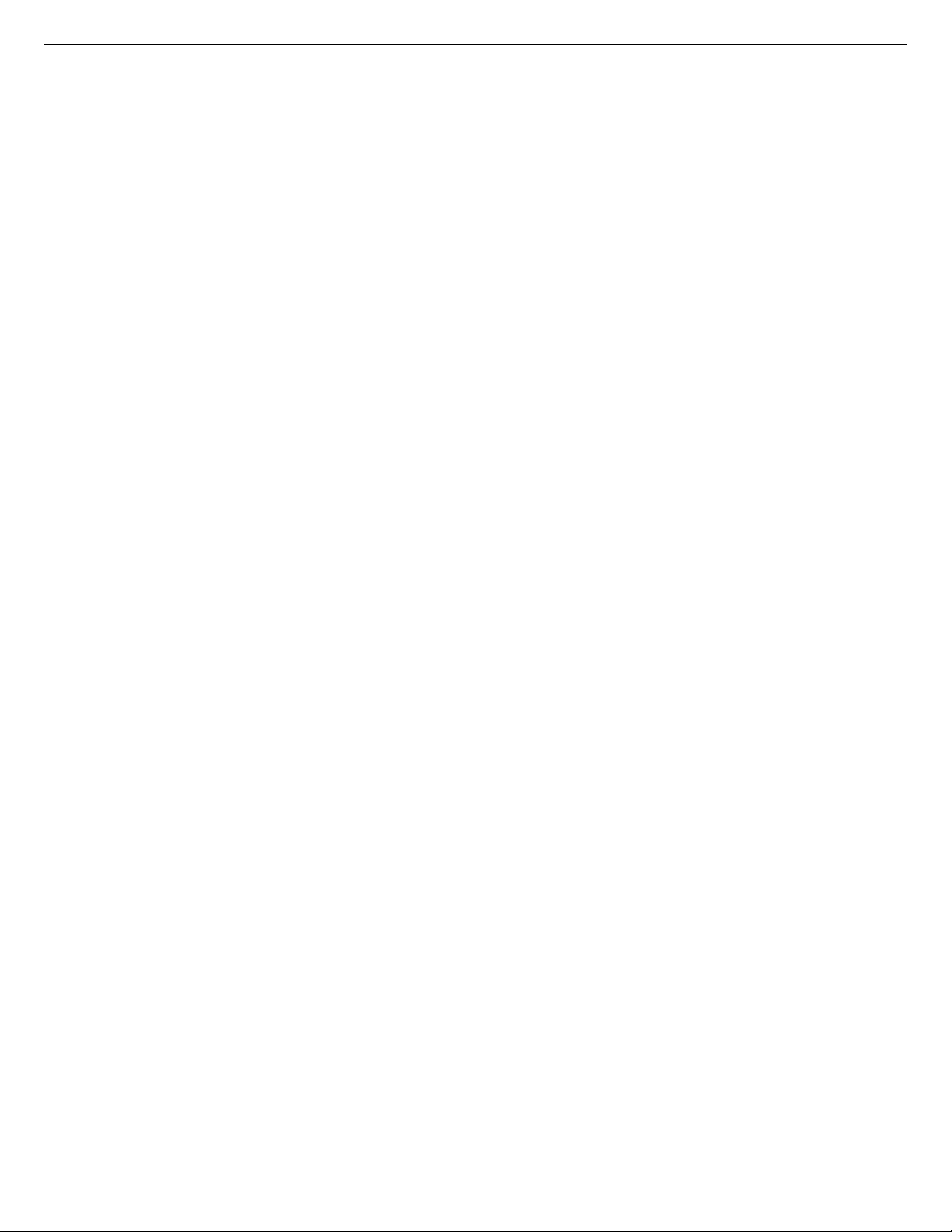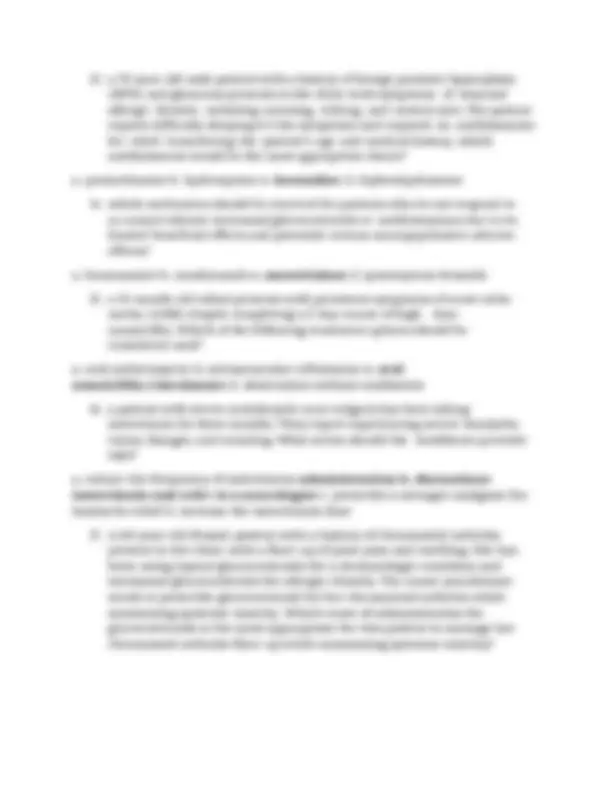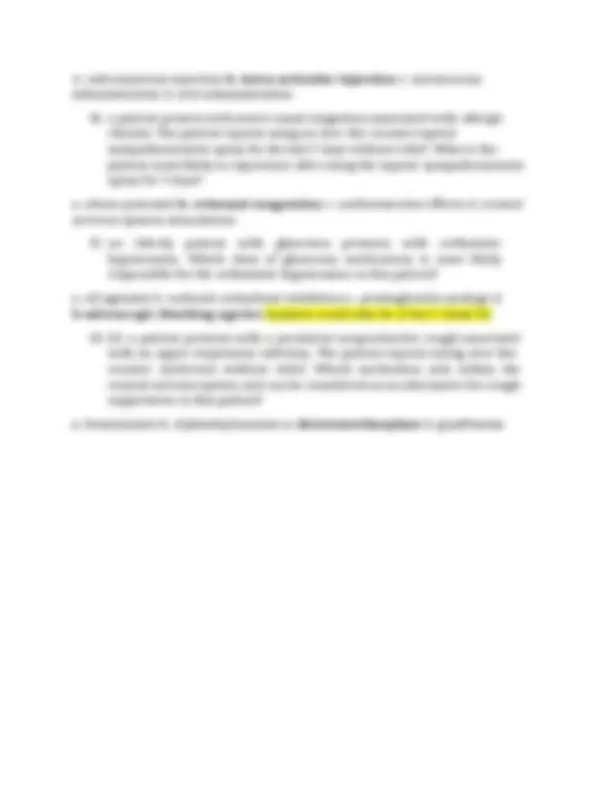




Study with the several resources on Docsity

Earn points by helping other students or get them with a premium plan


Prepare for your exams
Study with the several resources on Docsity

Earn points to download
Earn points by helping other students or get them with a premium plan
Community
Ask the community for help and clear up your study doubts
Discover the best universities in your country according to Docsity users
Free resources
Download our free guides on studying techniques, anxiety management strategies, and thesis advice from Docsity tutors
1. which complication can occur if necrotizing otitis media externa is left untreated a. sensorineural hearing loss b. excessive cerumen production c. cranial nerve involvement d. tympanic membrane perforation 2. A 25-year-old female presents with severe nodulocystic acne vulgaris that has not responded to topical treatments. She is not pregnant and has no history of depression. Which oral medication would be the most appropriate choice for her initial treatment? a. tetracycline b. erythromycin c. vancomycin d. minocycline 3. A 7-year-old child with a history of severe penicillin allergy presents with symptoms of AOM. Which antibiotic drug class should be avoided in this child? a. Fluoroquinolones b. macrolides c. sulfonamides d. cephalosporins 4. what is an approved use of topical tretinoin other than acne treatment?
Typology: Quizzes
1 / 4

This page cannot be seen from the preview
Don't miss anything!



Week 5 quiz ( I got 90%)
symptomatic relief and also prevents the release of inflammatory mediators from mast cells. Which medication would be the most appropriate choice? A. Loteprednol b. ketorolac c. cromolyn d. olopatadine
A. subcutaneous injection b. intra-articular injection c. intravenous administration d. oral administration